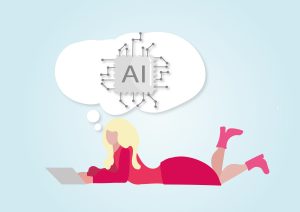Welcome to our blog post on the fascinating world of Chat AI technology. From understanding its basics to exploring its various applications in business, we are here to delve into the evolution, benefits, challenges, and future trends of Chat AI. Whether you are a business owner looking to implement this cutting-edge technology, or simply intrigued by its role in enhancing user experience, this post will guide you through important considerations such as choosing the right platform and designing effective conversations. Join us as we explore the exciting world of Chat AI and its potential to transform the way we communicate.
Understanding Chat Ai Technology
In today’s digital age, Chat AI technology has revolutionized the way businesses interact with their customers. Chat AI, short for Chat Artificial Intelligence, is a technology that enables machines to simulate human-like conversations, providing automated assistance and support. Through the use of natural language processing and machine learning algorithms, Chat AI can understand and respond to user queries in a conversational manner, mimicking human interaction.
One of the key applications of Chat AI is in customer service. Instead of relying solely on human agents, businesses can now integrate Chat AI into their customer support systems. This enables companies to handle a large volume of customer queries simultaneously, while reducing response times and improving overall efficiency.
Furthermore, Chat AI can be used in various industries such as e-commerce, banking, healthcare, and more. For instance, in e-commerce, Chat AI can assist customers in finding products, answering questions about shipping and returns, and even providing personalized recommendations based on user preferences. In banking, Chat AI can help customers with account inquiries, balance transfers, and loan applications, providing a seamless and convenient banking experience.
- Improved Efficiency: By automating customer interactions, Chat AI reduces the workload on human agents, allowing them to focus on more complex tasks.
- 24/7 Availability: Unlike human agents who have limited working hours, Chat AI can provide assistance round the clock, ensuring that customers receive support whenever they need it.
- Personalization: Through AI algorithms, Chat AI can analyze customer data and preferences to offer personalized recommendations and solutions, enhancing the overall customer experience.
In the development of Chat AI, several challenges arise. One common challenge is ensuring the accuracy and relevance of responses. Since Chat AI relies on machine learning, it requires extensive training and continuous improvement to understand and generate appropriate responses to user queries.
When choosing the right Chat AI platform for your business, it’s important to consider factors such as scalability, integration capabilities, customization options, and security. A robust and reliable platform will enable seamless integration with existing systems and provide flexibility for future enhancements.
| Benefit | Description |
|---|---|
| Improved Efficiency | By automating customer interactions, Chat AI reduces the workload on human agents, allowing them to focus on more complex tasks. |
| 24/7 Availability | Unlike human agents who have limited working hours, Chat AI can provide assistance round the clock, ensuring that customers receive support whenever they need it. |
| Personalization | Through AI algorithms, Chat AI can analyze customer data and preferences to offer personalized recommendations and solutions, enhancing the overall customer experience. |
In conclusion, Chat AI technology has revolutionized the way businesses interact with their customers. With its ability to simulate human-like conversations and provide automated assistance, Chat AI improves efficiency, enhances customer experience, and offers a personalized approach. However, it is crucial to address the challenges associated with development and choose the right platform to fully leverage the benefits that Chat AI technology has to offer.
The Evolution Of Chat Ai
Chat AI technology, also known as conversational AI, has come a long way since its inception. It has evolved to become an integral part of various industries, transforming the way businesses communicate and interact with their customers. The evolution of Chat AI can be traced back to the early days of simple chatbots that were programmed to respond to basic queries. However, with advancements in natural language processing (NLP) and machine learning algorithms, Chat AI has become more sophisticated and capable of holding human-like conversations.
One of the significant milestones in the evolution of Chat AI was the introduction of smart assistants like Siri, Google Assistant, and Amazon Alexa. These voice-enabled virtual assistants revolutionized the way we interact with technology by providing a more intuitive and hands-free experience. With the ability to understand context and user behavior, these smart assistants paved the way for more advanced Chat AI applications in various domains.
Another crucial development in the evolution of Chat AI is the integration of artificial intelligence techniques. Machine learning algorithms empower Chat AI systems to learn from user interactions and enhance their responses over time. This enables them to understand user intent better and provide personalized and accurate recommendations. Moreover, the use of natural language processing algorithms allows Chat AI systems to analyze text and voice inputs, breaking down sentences into meaningful entities, and extracting relevant information.
- One of the key benefits of implementing Chat AI in businesses is the automation of customer support services. Chat AI systems can handle a large volume of customer inquiries simultaneously, reducing the waiting time and improving customer satisfaction.
- Furthermore, Chat AI enables businesses to provide round-the-clock support, eliminating the limitations of human agents’ availability. This 24/7 availability ensures that customers can get their queries resolved at any time, enhancing the overall customer experience.
- Moreover, Chat AI can be integrated into e-commerce platforms, allowing businesses to offer personalized product recommendations, cross-selling, and up-selling opportunities based on user preferences and buying history.
| Common Challenges in Developing Chat AI | Choosing the Right Chat AI Platform |
|---|---|
| Developing a robust Chat AI system requires overcoming several challenges. One major challenge is training the AI model with sufficient data to ensure accurate and relevant responses. Additionally, handling context and understanding user intent can be complicated tasks, requiring advanced algorithms and techniques. Another challenge is handling ambiguous queries and providing meaningful responses in such cases. | When it comes to choosing the right Chat AI platform for your business, several factors must be considered. Firstly, the platform should have a user-friendly interface that simplifies the process of building and managing chatbots. Secondly, it should have powerful NLP and machine learning capabilities to enable intelligent conversation flows. Additionally, scalability and integration capabilities are vital to accommodate future business growth and seamlessly connect with existing systems and databases. |
In conclusion, the evolution of Chat AI technology has seen significant advancements, leading to its widespread adoption in various industries. From basic chatbots to intelligent conversational agents, Chat AI has transformed the way businesses interact with customers. By leveraging AI techniques, businesses can automate customer support, provide personalized experiences, and enhance overall customer satisfaction. However, developing Chat AI systems also comes with challenges, such as handling context and training the AI model with sufficient data. Choosing the right Chat AI platform is also crucial to ensure seamless integration and scalability. With the continuous evolution of Chat AI, we can expect even more innovative applications and advancements in the future.
Applications Of Chat Ai In Business
Chat Ai, or chatbot artificial intelligence, has become increasingly popular in business applications due to its ability to automate customer interactions and improve overall efficiency. This technology utilizes natural language processing and machine learning algorithms to simulate human-like conversations with users. By leveraging chat Ai, businesses can streamline various processes and provide seamless customer experiences. Let’s explore some of the key applications of chat Ai in business.
Customer Support
One of the primary applications of chat Ai in business is customer support. Chatbots can handle a wide range of customer inquiries, helping businesses provide round-the-clock assistance and personalized support. These chatbots can quickly resolve common customer issues and provide relevant information in a conversational manner. By implementing chat Ai in customer support, businesses can reduce response times, increase customer satisfaction, and save time and resources.
Sales and Lead Generation
Chat Ai can also play a crucial role in sales and lead generation. By integrating chatbots with websites or social media platforms, businesses can automate initial interactions with potential customers. Chatbots can engage visitors, qualify leads, and even recommend products or services based on customer preferences. This enables businesses to capture leads and convert them into sales more efficiently, ultimately boosting revenue.
Process Automation
Another key application of chat Ai in business is process automation. Chatbots can be used to automate repetitive tasks and processes, such as appointment scheduling, order tracking, or data entry. This not only saves time and reduces errors but also allows employees to focus on more strategic and value-added activities. By implementing chat Ai for process automation, businesses can improve operational efficiency and productivity.
Overall, the applications of chat Ai in business are diverse and impactful. Whether it’s optimizing customer support, enhancing sales and lead generation, or automating processes, chat Ai has the potential to revolutionize how businesses operate. As this technology continues to advance, it will be fascinating to see new and innovative ways that businesses integrate chat Ai into their operations.
Benefits Of Implementing Chat Ai
In today’s rapidly advancing technological landscape, Artificial Intelligence (AI) is playing an increasingly prominent role in various aspects of our lives. One particular area where AI has made significant strides is in chat applications. Chat AI refers to the integration of AI capabilities into chat platforms, enabling businesses to provide more efficient and personalized conversational experiences to their customers. There are several key benefits of implementing chat AI that organizations can leverage to gain a competitive edge and enhance customer satisfaction.
Improved Customer Service: One of the primary benefits of implementing chat AI is the ability to significantly improve customer service. With AI-powered chatbots, businesses can offer round-the-clock support, effectively addressing customer queries and issues in real-time. Virtual assistants can provide instant responses to frequently asked questions, saving both the customer and the business valuable time. Moreover, chat AI can understand the context of conversations and provide relevant and personalized recommendations, creating a more tailored and satisfying customer experience.
Cost Efficiency: Another advantage of chat AI is its ability to streamline business operations and reduce costs. By automating repetitive and mundane customer interactions, organizations can minimize the need for human intervention and allocate resources more efficiently. Chat AI systems can handle multiple customer conversations simultaneously, reducing the need for additional support staff. This not only saves costs but also enables businesses to scale their customer service without incurring significant expenses.
Data-driven Insights: Implementing chat AI can provide businesses with valuable data-driven insights that can be used to optimize various aspects of their operations. By analyzing chat logs and conversations, organizations can gain a deeper understanding of customer preferences, sentiment, and behavior. This data can be leveraged to enhance product development, improve marketing strategies, and identify areas for operational improvement. Furthermore, AI-powered analytics tools can provide valuable metrics and reports on chat performance, enabling businesses to measure the success of their chat AI implementation and make data-driven decisions.
| Key Benefits of Implementing Chat AI: |
|---|
|
|
|
Common Challenges In Developing Chat Ai
Developing chat AI can be a complex and challenging process that requires careful planning and execution. In this blog post, we will explore some of the common challenges that developers face when creating chat AI systems. By understanding these challenges, we can better prepare ourselves for the obstacles that may arise and find effective solutions to overcome them.
Lack of Training Data:
One of the primary challenges in developing chat AI is the availability and quality of training data. Training a chat AI model requires large volumes of diverse and relevant data to ensure its accuracy and effectiveness. However, obtaining such data can be difficult, especially in niche industries or when dealing with sensitive information. Developers often face the challenge of finding or creating suitable training data that adequately represents the target user base and covers a wide range of scenarios and conversations.
Handling Ambiguity and Context:
Another significant challenge in chat AI development is dealing with ambiguity and context in conversations. Chat AI systems need to be capable of understanding and responding appropriately to various user inputs, including those that are ambiguous or require contextual information. For example, a user may ask a chat AI system about “the latest news,” and the system must be able to determine the intended context, such as news about a specific topic or from a particular source. Developing algorithms and models that can accurately interpret and respond to ambiguous user inputs is a complex task that requires advanced natural language processing and machine learning techniques.
Maintaining User Engagement:
One of the main goals of chat AI systems is to provide a seamless and engaging user experience. However, maintaining user engagement can be a challenge, as users may quickly lose interest or become frustrated if the chat AI system fails to understand their queries or provide relevant and helpful responses. It is crucial for developers to design chat AI conversations that are interactive, conversational, and personalized to keep users engaged. This involves carefully crafting dialogue flows, implementing dynamic responses, and continuously improving the system based on user feedback and preferences.
| Common Challenges in Developing Chat AI |
|---|
| Lack of Training Data |
| Handling Ambiguity and Context |
| Maintaining User Engagement |
Developing chat AI systems comes with its fair share of challenges. From acquiring suitable training data to handling ambiguity and context, and ensuring user engagement, developers face various obstacles throughout the development process. However, by recognizing these challenges and implementing effective strategies to overcome them, developers can create chat AI systems that offer enhanced user experiences and improved functionality.
Choosing The Right Chat Ai Platform
Choosing The Right Chat AI Platform
When it comes to implementing an efficient chat-based customer support system, choosing the right chat AI platform plays a crucial role. With the advancements in artificial intelligence, there are numerous options available in the market today. The perfect chat AI platform is the one that aligns with your business requirements and helps you deliver exceptional customer experiences.
One of the key factors to consider while selecting a chat AI platform is its ability to handle complex queries. An effective platform should be equipped with robust natural language processing capabilities, allowing it to understand and respond accurately to user queries. Additionally, it should also have the capability to learn and adapt over time, improving its response accuracy through machine learning algorithms.
Another important aspect to consider is the scalability of the chat AI platform. As your business grows, it is crucial to have a platform that can handle increased user demand without compromising on performance. Look for a platform that offers seamless integration with your existing systems and allows you to easily scale your operations as and when needed.
- Data security and privacy: With customer data being at the heart of chat AI systems, it is imperative to choose a platform that prioritizes data security and privacy. Ensure that the platform complies with data protection regulations and offers robust encryption mechanisms to safeguard sensitive customer information.
- Customization and flexibility: Every business is unique, and your chat AI platform should be able to adapt to your specific needs. Look for a platform that offers customization options to match your brand’s voice and tone, as well as the ability to create personalized conversational flows to enhance the user experience.
Lastly, don’t forget to consider the cost and support options provided by the chat AI platform. Evaluate the pricing models available and choose one that aligns with your budget and expected return on investment. Additionally, ensure that the platform offers comprehensive support and documentation to assist you in the implementation and maintenance processes.
| Key Considerations | Features |
|---|---|
| Complex Query Handling | An effective chat AI platform should have robust natural language processing capabilities to accurately understand and respond to user queries. |
| Scalability | Choose a platform that seamlessly integrates with your systems and allows for easy scalability to accommodate increasing user demand. |
| Data Security and Privacy | Prioritize a platform that complies with data protection regulations and offers robust encryption mechanisms to safeguard customer information. |
| Customization and Flexibility | Look for a platform that allows customization to match your brand’s voice and tone, and offers the ability to create personalized conversational flows. |
In conclusion, choosing the right chat AI platform is crucial for the success of your chat-based customer support system. Consider factors such as complex query handling, scalability, data security and privacy, customization options, and support offerings when making your decision. Remember, a well-chosen platform can greatly enhance your customer experiences and drive business growth.
Designing Effective Chat Ai Conversations
In today’s rapidly evolving technological landscape, Chat AI has emerged as a powerful tool for businesses to enhance customer interactions and improve operational efficiency. Designing effective Chat AI conversations is crucial to ensuring a seamless user experience and achieving business objectives. Whether it’s a virtual assistant, a customer support chatbot, or a messaging application, the key lies in designing conversations that are intuitive, engaging, and effective in understanding and responding to user queries and needs. In this blog post, we will explore the essential components and best practices for designing effective Chat AI conversations.
Understanding User Intent: To design effective Chat AI conversations, it is essential to understand the user’s intent behind the conversation. By analyzing user inputs and identifying the intent, businesses can tailor their responses accordingly. This can be achieved through natural language processing and machine learning algorithms that can classify user queries into different categories and provide appropriate responses.
Creating a Conversational Flow: A well-designed Chat AI conversation should flow naturally, mimicking a real conversation between two humans. It should have a logical structure with clear and concise responses. Designing a conversational flow involves mapping out different user paths and scenarios and preparing appropriate response templates. It is important to strike a balance between providing a scripted response and allowing flexibility to understand and address unexpected user inputs.
Personalizing the Conversation: Customizing Chat AI conversations to reflect the brand’s personality helps create a more personalized and engaging experience for users. By defining a tone, style, and language that aligns with the brand’s identity, businesses can establish a stronger connection with their customers. Personalization can also extend to tailoring responses based on user preferences, history, and context, further enhancing the user experience.
- Utilizing Rich Media:
- Incorporating Visual Elements:
| Keyword | Usage in Sentence |
|---|---|
| chat AI | Designing effective Chat AI conversations requires a deep understanding of how chat AI systems operate. |
| designing effective | Designing effective Chat AI conversations involves considering various factors such as user intent and personalized responses. |
| user experience | Enhancing user experience is a key goal in designing effective Chat AI conversations. |
Enhancing User Experience With Chat Ai
Chat Ai technology has revolutionized the way businesses interact with their customers online. It has significantly improved user experience by providing instant and personalized responses to queries. By leveraging artificial intelligence and natural language processing, chat Ai systems are able to understand and interpret user inputs, making conversations with virtual agents more conversational and human-like.
One of the key benefits of using chat Ai in enhancing user experience is the ability to provide round-the-clock support. Unlike human agents, chat Ai systems are available 24/7, eliminating the need for customers to wait for a response. This improves customer satisfaction and creates a positive impression of the brand.
Another advantage of chat Ai technology is its ability to handle multiple conversations simultaneously. With traditional customer support channels, such as phone or email, agents can only handle one conversation at a time. However, chat Ai systems can handle numerous conversations simultaneously, reducing waiting time and improving overall efficiency.
| Benefits of Chat Ai in Enhancing User Experience: |
|---|
| 1. Instant and personalized responses |
| 2. 24/7 availability |
| 3. Handling multiple conversations simultaneously |
Furthermore, chat Ai systems can learn from past interactions and improve their responses over time. Through machine learning algorithms, virtual agents can analyze previous conversations and identify patterns to provide more accurate and relevant information to users. This continuous learning process enhances the user experience by understanding user preferences and anticipating their needs.
Additionally, chat Ai technology offers a seamless integration across multiple platforms. Whether it’s a website, mobile app, or social media platform, chat Ai can be easily integrated to provide consistent and unified user experience. This flexibility allows businesses to reach their customers wherever they are and provide support in their preferred channels.
In conclusion, chat Ai technology has proven to be a valuable tool in enhancing user experience. With its ability to provide instant and personalized responses, round-the-clock availability, handling multiple conversations simultaneously, continuous learning, and seamless integration, businesses can create a more engaging and efficient customer support experience. By implementing chat Ai, companies can meet customer expectations, improve customer satisfaction, and gain a competitive edge in the digital landscape.
Measuring Success With Chat Ai Analytics
Measuring Success With Chat AI Analytics
Chat artificial intelligence (AI) technology has become increasingly popular in recent years, revolutionizing the way businesses interact with their customers. With advancements in natural language processing and machine learning, chat AI systems have become more effective at understanding and responding to user queries. However, implementing chat AI is only half the battle – measuring its success and effectiveness is equally important. This is where chat AI analytics comes into play.
Chat AI analytics involves the collection and analysis of data from chat AI systems to gain insights into user behavior, system performance, and overall effectiveness. By tracking and monitoring various metrics, businesses can assess the performance of their chat AI solutions and make data-driven decisions to improve customer service and drive business growth.
One of the key metrics for measuring the success of chat AI is the chatbot’s response accuracy. This refers to the percentage of user queries that are correctly understood and answered by the chatbot. By analyzing response accuracy, businesses can identify common challenges and areas for improvement in their chat AI system. They can then fine-tune the system’s algorithms and train it with additional data to enhance its performance.
- Another important metric to consider is customer satisfaction. Chat AI analytics can help businesses measure the level of satisfaction users have with the chatbot’s responses and overall user experience. This can be done through post-interaction surveys or by analyzing customer feedback. By understanding customer satisfaction levels, businesses can identify areas where the chatbot may be falling short and take necessary steps to improve user experience.
- Additionally, chat AI analytics can provide insights into user engagement and behavior. Tracking metrics such as the number of interactions, average session duration, and repeat usage can help businesses gauge how actively users are engaging with the chat AI system. This data can be used to identify patterns and preferences, allowing businesses to optimize their chat AI strategies and tailor their responses to match user expectations.
A well-designed chat AI analytics system should also include real-time monitoring and reporting. This enables businesses to track the system’s performance in real-time, identifying and resolving issues as they arise. Real-time reporting also provides actionable insights that can help businesses make informed decisions and drive continuous improvement in their chat AI solutions.
In conclusion, measuring success with chat AI analytics is essential for businesses looking to maximize the benefits of their chat AI systems. By tracking metrics such as response accuracy, customer satisfaction, and user engagement, businesses can identify areas for improvement and make data-driven decisions to enhance the overall effectiveness of their chat AI solutions. With the right analytics tools in place, businesses can achieve optimal performance and deliver enhanced user experiences through their chat AI platforms.
| Benefits of Measuring Success with Chat AI Analytics |
|---|
| 1. Identify areas for improvement in chat AI systems |
| 2. Enhance customer satisfaction and user experience |
| 3. Optimize chat AI strategies based on user engagement and behavior |
| 4. Real-time monitoring and issue resolution |
| 5. Make data-driven decisions for continuous improvement |
Future Trends In Chat Ai
The world of chat AI is constantly evolving, and as technology advances, so do its trends. In this blog post, we will discuss some of the future trends in chat AI that are expected to shape the way we interact with virtual assistants and chatbots.
One of the emerging trends in chat AI is the integration of voice recognition technologies. With the increasing popularity of voice assistants like Siri and Alexa, chat AI is expected to incorporate voice capabilities to enhance user experience. This will enable users to have natural conversations with virtual assistants, making interactions more intuitive and seamless.
- Another future trend in chat AI is the use of machine learning algorithms to improve chatbot performance. Machine learning algorithms, such as natural language processing (NLP), can help chatbots understand and interpret user inquiries more accurately. By analyzing vast amounts of data, chat AI systems can continually learn and adapt, providing more personalized and relevant responses.
| Benefits | Challenges |
|---|---|
| 1. Improved customer satisfaction | 1. Ensuring privacy and data security |
| 2. Increased efficiency and productivity | 2. Overcoming language barriers and cultural differences |
| 3. Cost savings through automation | 3. Achieving natural and coherent conversations |
As chat AI technology advances, there is also a growing trend towards the development of hybrid systems. These systems combine the strengths of both rule-based and machine learning approaches, allowing chatbots to handle both structured and unstructured data effectively. This hybrid approach offers more flexibility and scalability, enabling chat AI to handle complex tasks and provide comprehensive solutions.
Lastly, personalization is a key focus in the future of chat AI. As users interact with chatbots across multiple platforms and devices, there is a need for chat AI systems to seamlessly integrate and deliver consistent experiences. Through the use of personalized recommendations and proactive suggestions, chat AI can tailor interactions based on individual preferences, creating a more engaging and personalized user experience.
In conclusion, the future of chat AI is bright and exciting. With the integration of voice recognition technologies, advancements in machine learning algorithms, the development of hybrid systems, and a strong focus on personalization, chat AI is poised to revolutionize the way we communicate and interact with virtual assistants and chatbots.
Frequently Asked Questions
What is chat AI technology?
Chat AI technology refers to the use of artificial intelligence in chat systems to enable automated interactions and conversations with users.
How has chat AI evolved over time?
Chat AI has evolved from simple rule-based systems to advanced natural language processing and machine learning algorithms, enabling more intelligent and context-aware conversations.
What are some applications of chat AI in business?
Chat AI is used in various business applications such as customer support, sales and marketing, virtual assistants, and chatbots for websites and mobile apps.
What are the benefits of implementing chat AI?
Implementing chat AI can improve customer service, reduce costs, increase efficiency, provide 24/7 support, personalize interactions, and gather valuable insights from user interactions.
What are common challenges in developing chat AI?
Common challenges in developing chat AI include understanding user intent, handling complex conversations, maintaining context, handling errors and fallbacks, and ensuring scalability and performance.
How to choose the right chat AI platform?
When choosing a chat AI platform, consider factors such as the platform’s capabilities, integration options, pricing, scalability, customization options, and customer support.
How to design effective chat AI conversations?
To design effective chat AI conversations, focus on clear and concise language, personalized responses, maintaining context, handling user queries and prompts effectively, and incorporating a natural conversational flow.
How can chat AI enhance user experience?
Chat AI can enhance user experience by providing instant and personalized responses, guiding users through processes, understanding and addressing user needs effectively, and offering a seamless and interactive conversational interface.
How to measure success with chat AI analytics?
To measure success with chat AI analytics, track metrics such as customer satisfaction, response time, resolution rate, conversion rate, user engagement, and gather insights from user feedback and interactions.
What are some future trends in chat AI?
Some future trends in chat AI include the integration of voice and chat interfaces, advancements in natural language understanding, chat AI in augmented reality and virtual reality environments, and increased personalization and customization.








